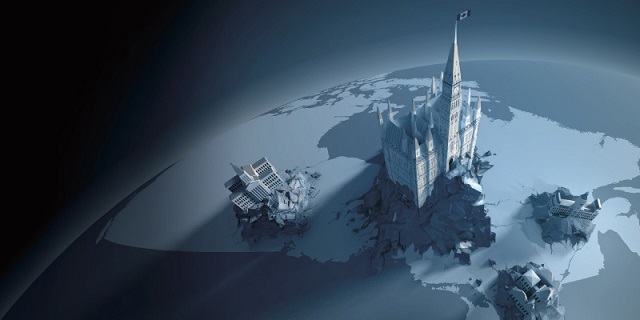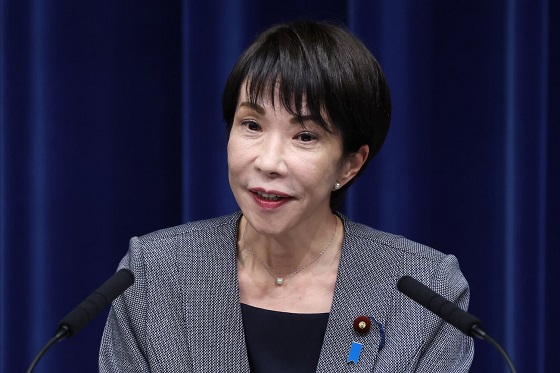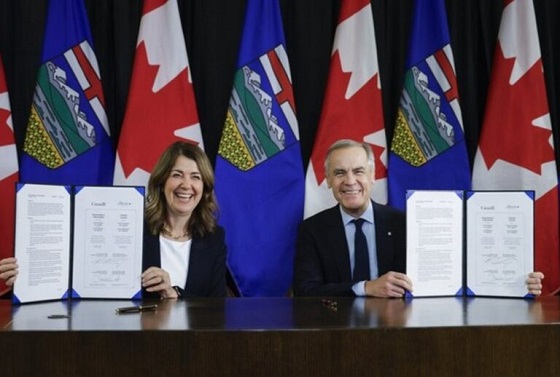Business
Growing the government won’t help Canada’s economy

From the Fraser Institute
By Jake Fuss and Grady Munro and Alex Whalen
Empirical research suggests that economic growth is maximized when the size of government falls between 24 and 32 per cent of GDP. In other words, when governments spend in excess of this range, the economy will not grow as much as it would if government operated within that threshold
Canada is suffering from an economic growth crisis, and governments across the country should reassess their policies. Governments (particularly the federal government) have recently taken a more active role in the economy through increased spending and bureaucracy. However, policymakers must take a step back and recognize that growing government doesn’t lead to growth in the economy.
Canada’s economy has been stagnant for the last decade. From 2013 to 2022, per-person GDP (a broad measure of living standards) grew at its slowest pace since the 1930s, after accounting for inflation. And more recent data shows that in the fourth quarter of 2023, per-person GDP (inflation-adjusted) stood at $58,111—which is $51 per person lower than it was at the end of 2014. Simply put, Canadians have experienced a decade of dismal growth, and are now actually worse off than they were a decade ago.
During this time, many governments in Canada have adopted an approach of greater involvement in the economy and significantly higher spending. Take the federal government, for example.
Since 2014/15, the government has increased annual program spending (total spending minus debt interest) by roughly 75 per cent, from $256.3 billion to $448.2 billion in 2022/23. Moreover, the Trudeau government has recorded the five-highest years of federal spending in Canadian history, after accounting for population growth and inflation. Much of this spending has gone towards expanding Ottawa’s role in the economy through increased transfers, business subsidies or new programs such as $10-a-day daycare and national dental care.
Provincial governments in Quebec, Nova Scotia and British Columbia (to name a few) have also recently reached historical highs in per-person program spending (even after excluding COVID-related spending). Simply put, governments across the country have been increasing spending and becoming more involved in the economy.
One way to measure the size of government, that allows for the comparison of jurisdictions over time, is known as total consolidated government spending as a share of GDP. This measure includes all spending at the local, provincial and federal levels in a jurisdiction and compares that level to the size of the economy.

According to a recent study, in 2022 (the latest year of available data) the size of government in Canada was 40.5 per cent of GDP compared to 38.2 per cent in 2014.
Among the provinces, total government spending ranged from 26.8 per cent of GDP in Alberta to 63.0 per cent of GDP in Nova Scotia. Compared to 2014, the size of government grew in eight of 10 provinces—only Prince Edward Island and B.C. experienced declines in government spending as a share of the economy. It’s also important to note that this is simply government spending. The true size of government, when accounting for things like regulation, is even larger.
Growing government matters because it influences economic growth. When the size of government is below a certain level, it lacks the resources to deliver services such as policing, courts or national defence—which are essential to a functioning economy. On the other hand, when government is too big it engages in activities best left to the free market and effectively crowds-out private-sector activity that contributes to economic growth. Therefore, when a government is too small or too big, economic growth (and consequently living standards) suffer.
Empirical research suggests that economic growth is maximized when the size of government falls between 24 and 32 per cent of GDP. In other words, when governments spend in excess of this range, the economy will not grow as much as it would if government operated within that threshold—all else equal. Based on the numbers presented above, it’s clear the vast majority of governments in Canada are too big. For nine of 10 provinces and the federal government, their spending exceeded 32 per cent of GDP in 2022.
As Canadians look for solutions to address a stagnating economy and falling living standards, governments should recognize that taking a more active role in the economy won’t solve the problem—and will likely make it worse.
Authors:
Business
Stripped and shipped: Patel pushes denaturalization, deportation in Minnesota fraud

FBI Director Kash Patel issued a blunt warning over the weekend as federal investigators continue unraveling a sprawling fraud operation centered in Minnesota, saying the hundreds of millions already uncovered represent “just the tip of a very large iceberg.”
In a lengthy statement posted to social media, Patel said the Federal Bureau of Investigation had quietly surged agents and investigative resources into the state well before the scandal gained traction online. That effort, he said, led to the takedown of an estimated $250 million fraud scheme that stole federal food aid intended for vulnerable children during the COVID pandemic.
According to Patel, the investigation exposed a network of sham vendors, shell companies, and large-scale money laundering operations tied to the Feeding Our Future case. Defendants named by the FBI include Abdiwahab Ahmed Mohamud, Ahmed Ali, Hussein Farah, Abdullahe Nur Jesow, Asha Farhan Hassan, Ousman Camara, and Abdirashid Bixi Dool, each charged with offenses ranging from wire fraud to conspiracy and money laundering.
Patel also said Abdimajid Mohamed Nur and others were charged in a separate attempt to bribe a juror with $120,000 in cash. He noted that several related cases have already resulted in guilty pleas, prison sentences of up to 10 years, and nearly $48 million in restitution orders.
Despite those outcomes, Patel warned the case is far from finished.
“The FBI believes this is just the tip of a very large iceberg,” he said, adding that investigators will continue following the money and that the probe remains ongoing. Patel further confirmed that many of those convicted are being referred to immigration authorities for possible denaturalization and deportation proceedings where legally applicable.
The renewed focus follows a viral video circulated by independent journalist Nick Shirley, which appeared to show multiple childcare and learning centers operating as empty or nonfunctional storefronts. The footage sparked immediate backlash from Republicans, including Vice President JD Vance.
House Majority Whip Tom Emmer accused Minnesota Gov. Tim Walz of sitting idle while massive sums were stolen from taxpayers. Walz addressed the allegations during a November press conference, before the full scope of the fraud became public, saying the scandal “undermines trust in government” and threatens programs meant to help vulnerable residents.
“If you’re committing fraud, no matter where you come from or what you believe, you are going to go to jail,” Walz said at the time.
Authorities say the alleged schemes date back to at least 2015, beginning with overbilling Minnesota’s Child Care Assistance Program and later expanding into Medicaid-funded disability and housing programs. One such housing initiative, aimed at helping seniors and disabled residents secure stable housing, was shut down earlier this year after officials cited what they described as large-scale fraud.
The fallout has already reached the federal level. Last month, President Trump announced the suspension of Temporary Protected Status for Somali nationals, arguing that Minnesota had become a hub for organized welfare fraud and money laundering activity.
Business
Mainstream media missing in action as YouTuber blows lid off massive taxpayer fraud

Vice President JD Vance is giving public credit to a YouTube journalist for doing what he says legacy media and elite institutions have failed to do: follow the money in Minnesota. In a post on X, Vance praised independent reporter Nick Shirley for digging into alleged fraud networks tied to the state, saying Shirley “has done far more useful journalism than any of the winners of the 2024 Pulitzer prizes.” The comment was a direct response to a video Shirley shared online documenting what he described as widespread fraud, with Shirley claiming his team identified more than $110 million in suspicious activity in a single day while confronting facilities allegedly receiving millions in public funds.
Shirley’s reporting has been circulating widely among conservatives, with commentators amplifying clips of him visiting supposed daycare and education centers that appeared inactive despite receiving massive federal aid. Conservative media personality Benny Johnson said Shirley had exposed more than $100 million in Minnesota Somali-linked fraud routed through fake daycare and healthcare fronts, adding to the pressure on state leadership. The issue gained further traction after Tom Emmer, Minnesota’s top House Republican, demanded answers from Gov. Tim Walz following a viral clip showing Shirley confronting workers at an alleged daycare in South Minneapolis. Shirley reported the center, called the “Quality Learning Center,” showed no visible activity despite claims it served up to 99 children, and even misspelled “learning” on its signage. As Shirley approached, a woman inside was heard shouting “Don’t open up,” while incorrectly accusing him of being an ICE agent.
🚨 Here is the full 42 minutes of my crew and I exposing Minnesota fraud, this might be my most important work yet. We uncovered over $110,000,000 in ONE day. Like it and share it around like wildfire! Its time to hold these corrupt politicians and fraudsters accountable
We ALL… pic.twitter.com/E3Penx2o7a
— Nick shirley (@nickshirleyy) December 26, 2025
The controversy builds on earlier reporting from City Journal, which published a November investigation citing federal counterterrorism sources who said millions of dollars siphoned through Minnesota fraud schemes had been sent overseas, with some of the money allegedly ending up in the hands of Al-Shabaab. One confidential source quoted in the report bluntly claimed, “The largest funder of Al-Shabaab is the Minnesota taxpayer.” Since that report, the scrutiny has widened inside the Trump administration. Treasury Secretary Scott Bessent has announced that the Treasury Department is examining whether Minnesota taxpayer funds were diverted to terrorist-linked groups, while Education Secretary Linda McMahon has publicly called on Walz to resign amid separate allegations of large-scale education fraud within the state’s college system.
Taken together, the attention from Vance, congressional Republicans, and multiple federal agencies has elevated Shirley’s reporting from viral internet content to a flashpoint in a broader debate over fraud, accountability, and the role of independent journalists. For the vice president, the message was clear: real accountability sometimes comes not from prize committees or press rooms, but from outsiders willing to ask uncomfortable questions and stand in front of locked doors with a camera rolling.
-

 Business2 days ago
Business2 days agoLargest fraud in US history? Independent Journalist visits numerous daycare centres with no children, revealing massive scam
-

 Business2 days ago
Business2 days ago“Magnitude cannot be overstated”: Minnesota aid scam may reach $9 billion
-

 Business20 hours ago
Business20 hours agoWhat Do Loyalty Rewards Programs Cost Us?
-

 Business7 hours ago
Business7 hours agoLand use will be British Columbia’s biggest issue in 2026
-

 Censorship Industrial Complex2 days ago
Censorship Industrial Complex2 days agoUS Under Secretary of State Slams UK and EU Over Online Speech Regulation, Announces Release of Files on Past Censorship Efforts
-

 Haultain Research20 hours ago
Haultain Research20 hours agoSweden Fixed What Canada Won’t Even Name
-

 Business5 hours ago
Business5 hours agoMainstream media missing in action as YouTuber blows lid off massive taxpayer fraud
-

 Energy8 hours ago
Energy8 hours agoWhy Japan wants Western Canadian LNG


